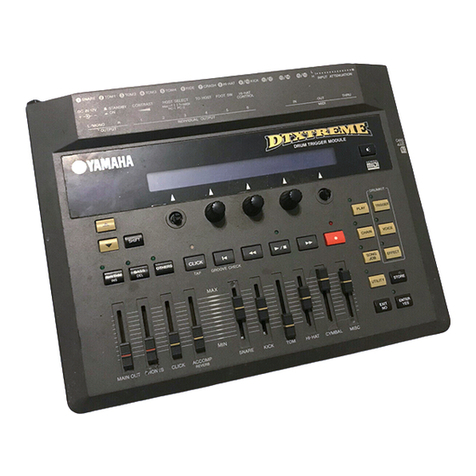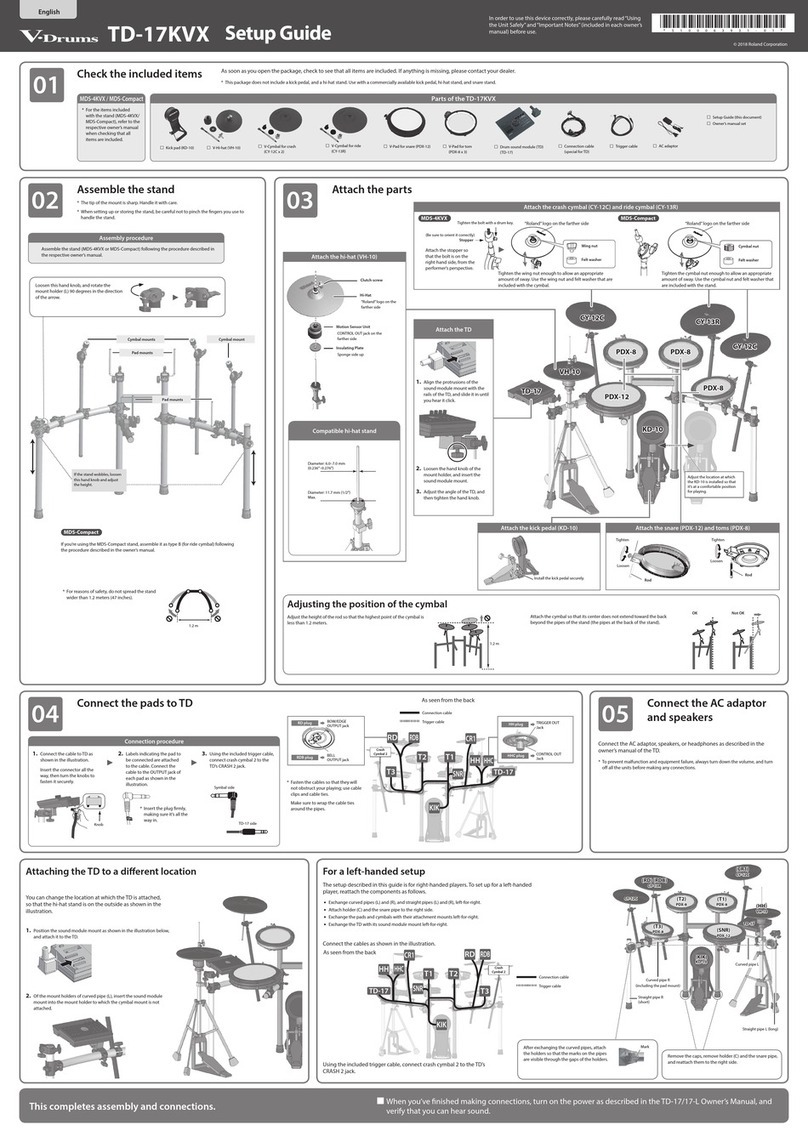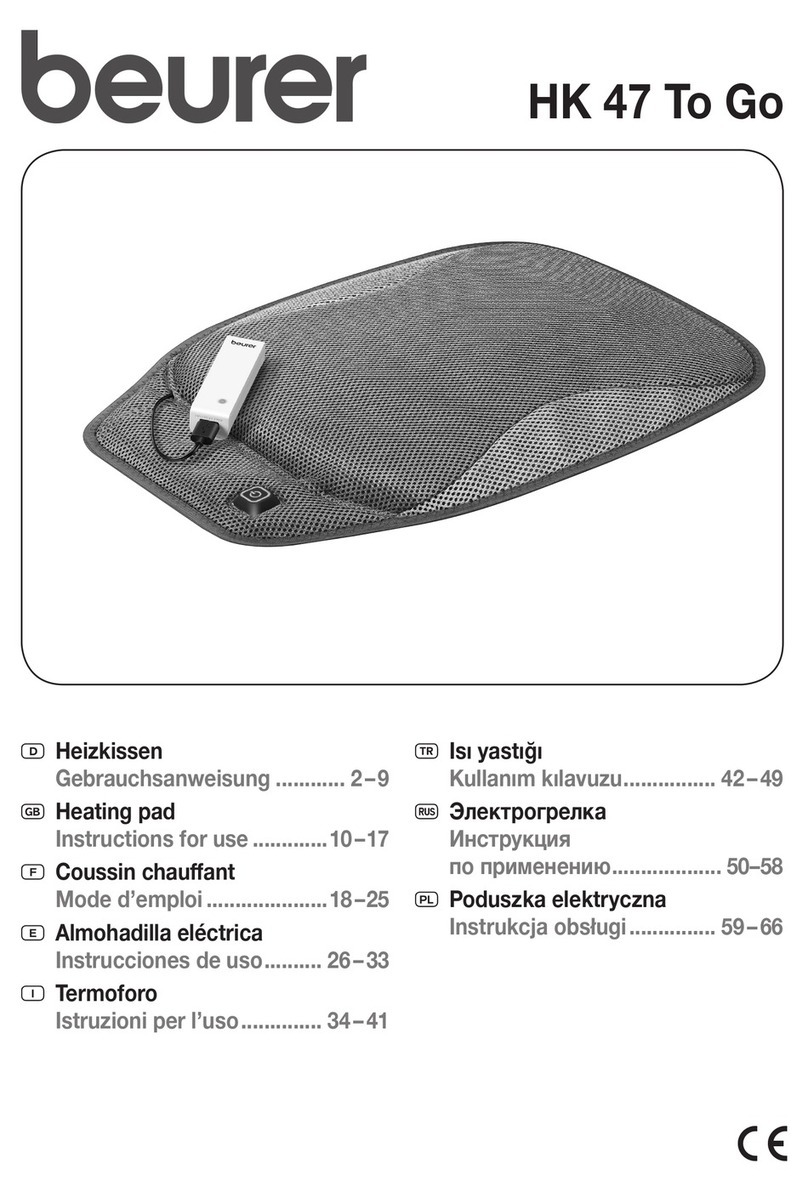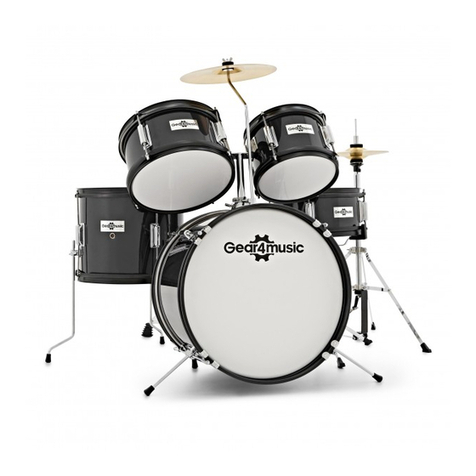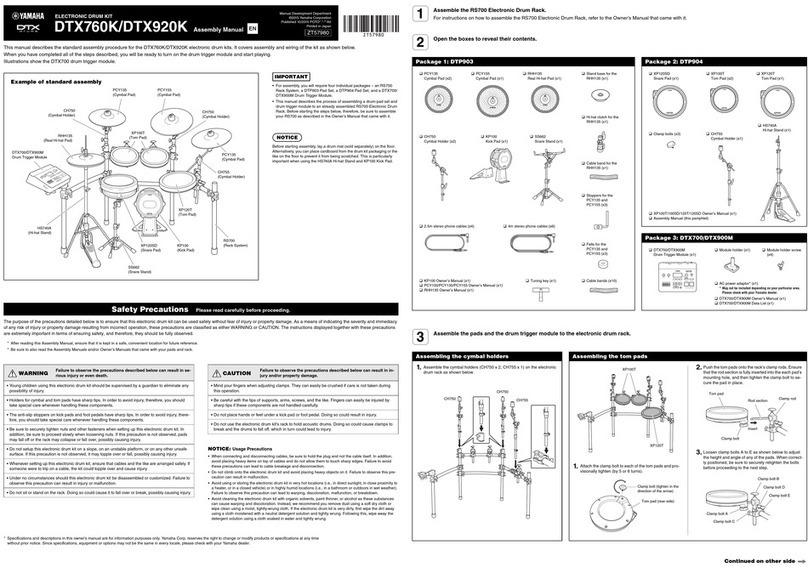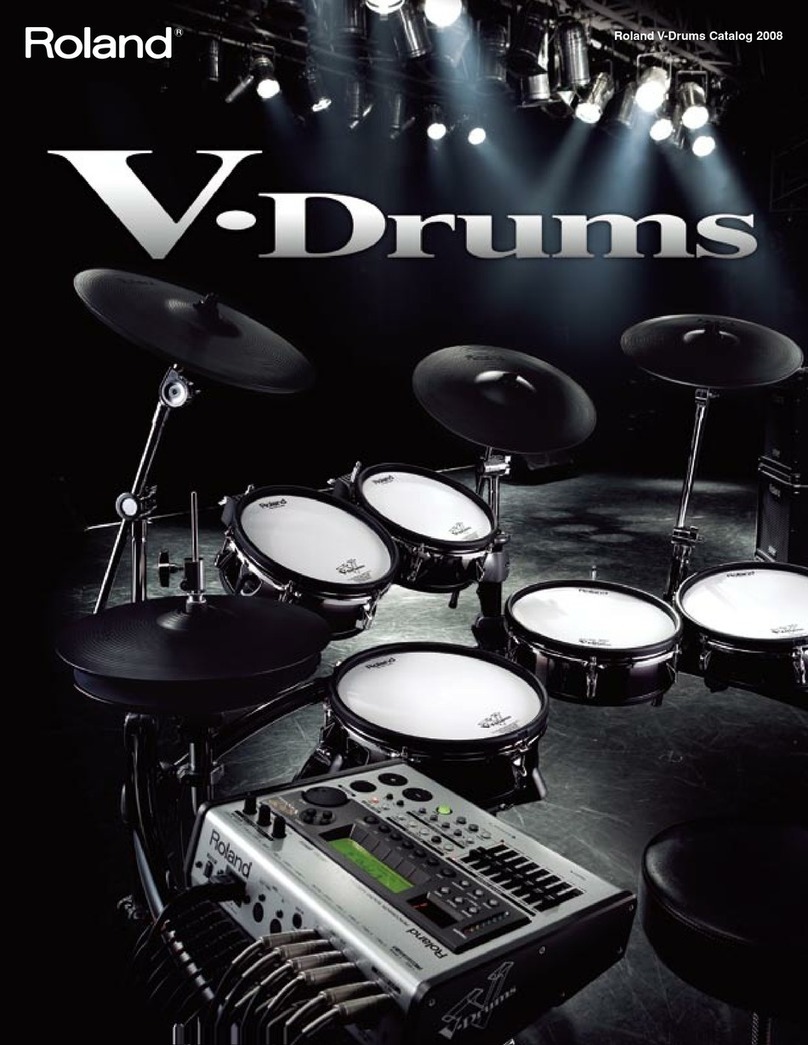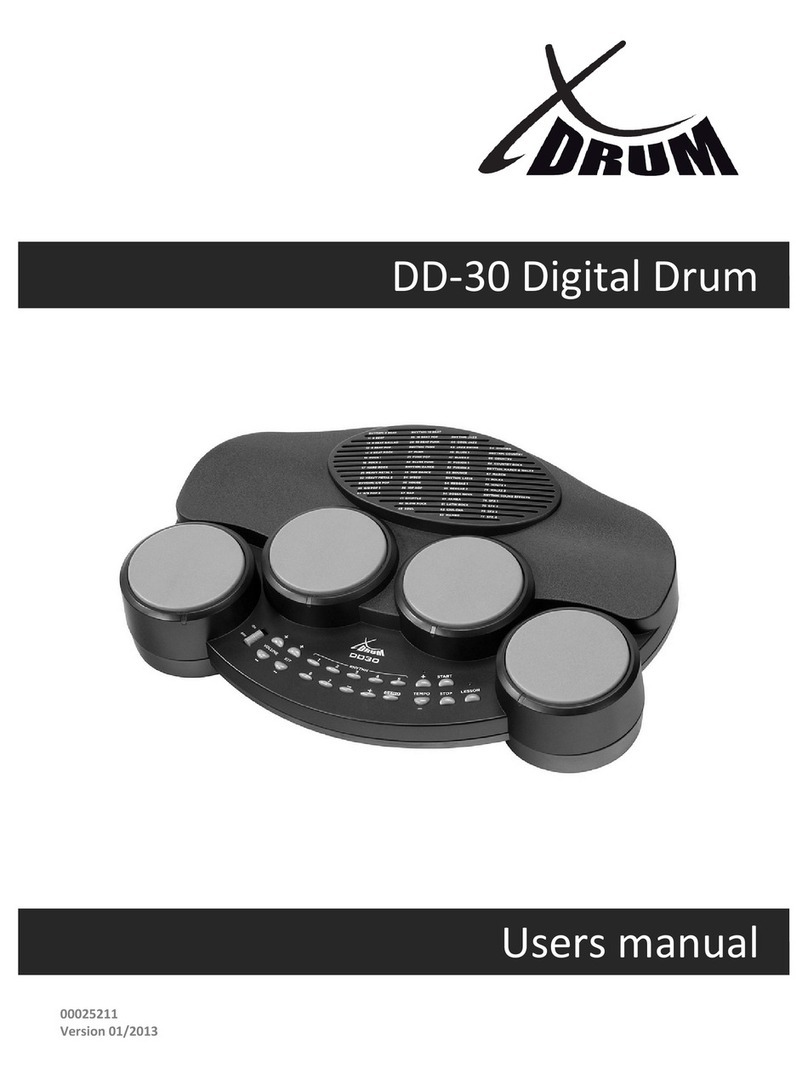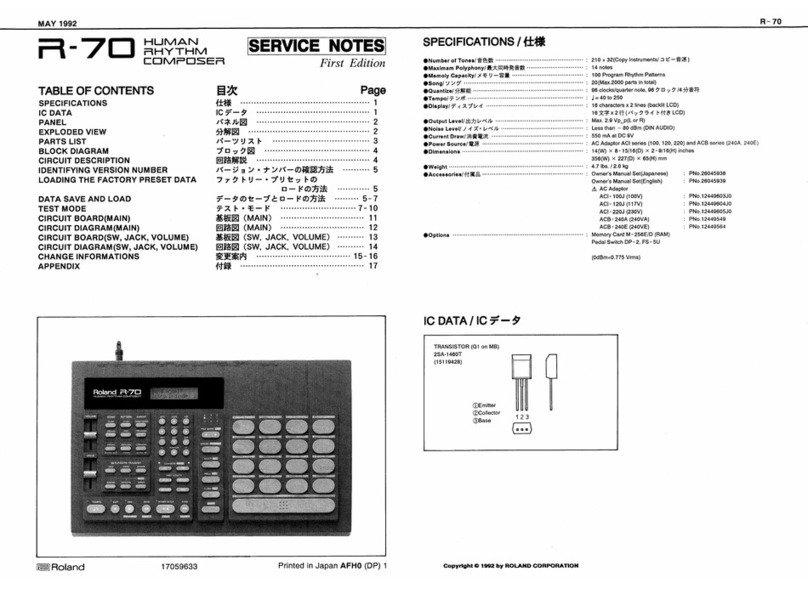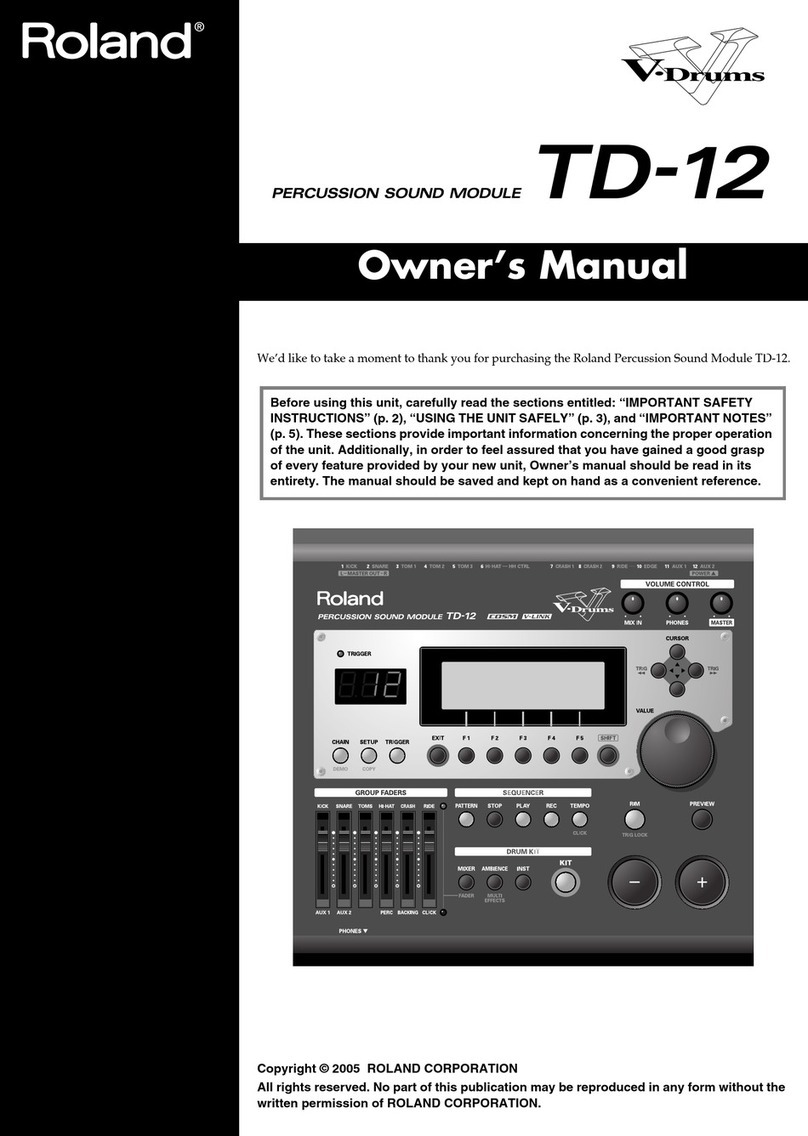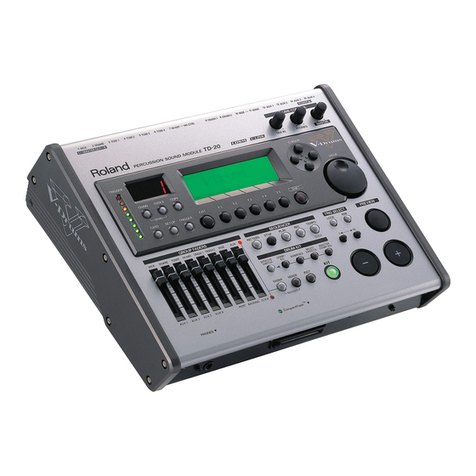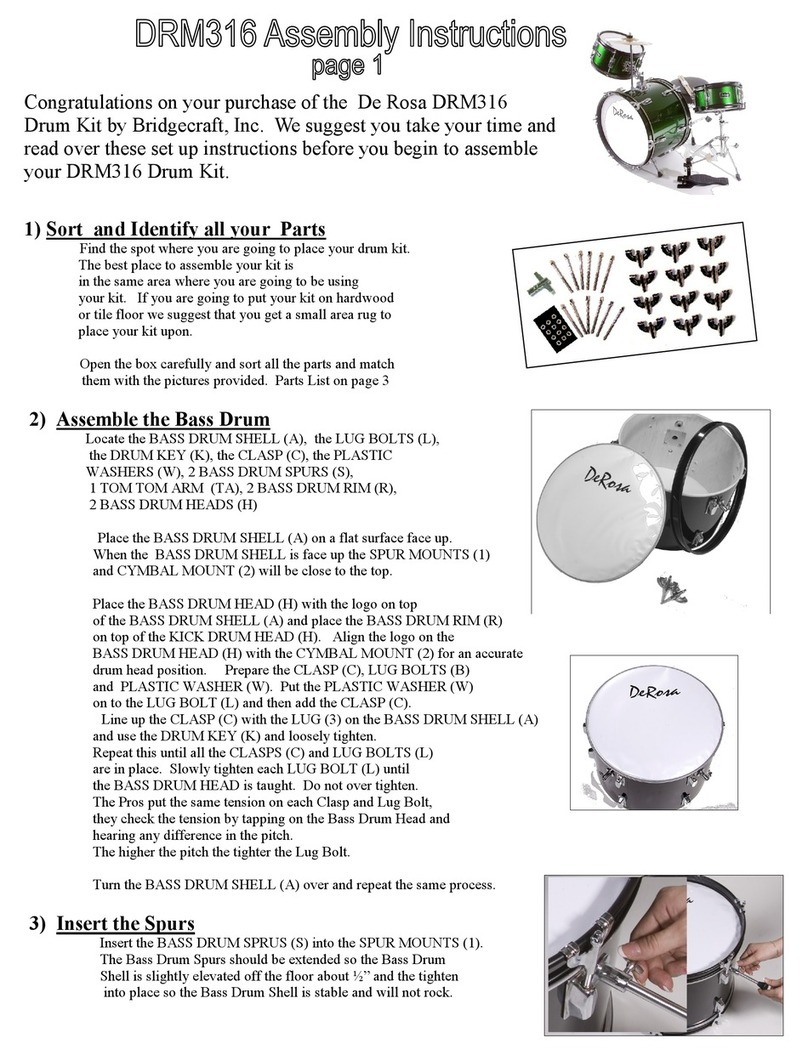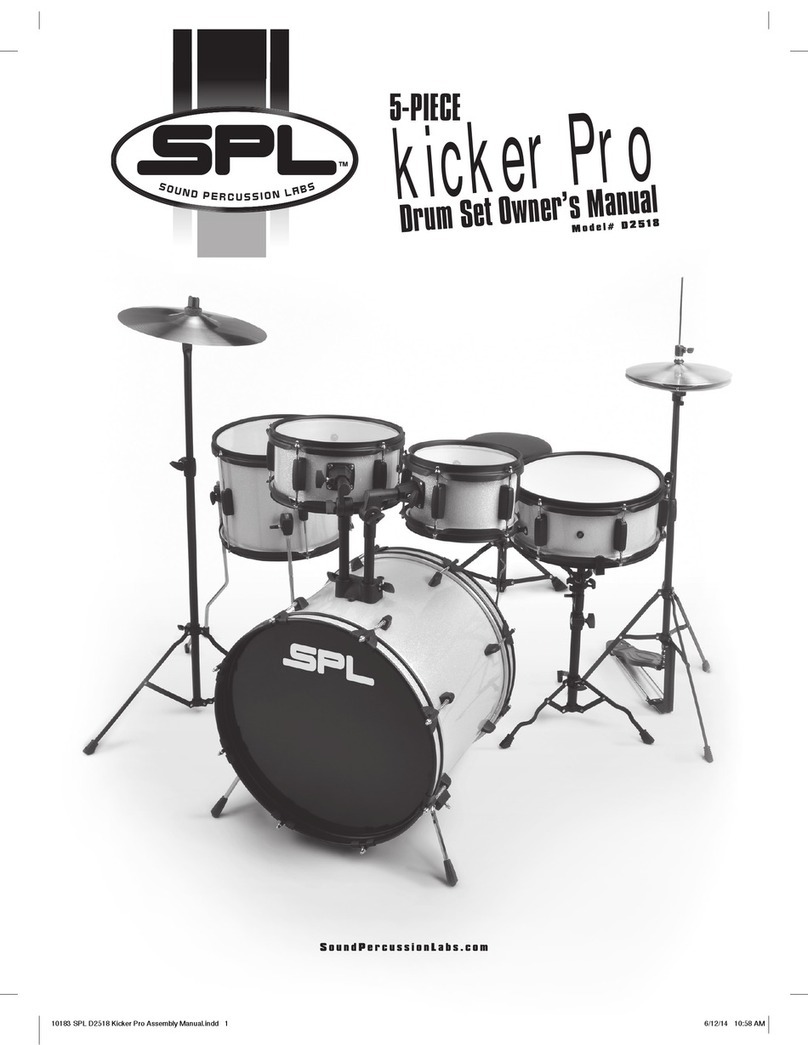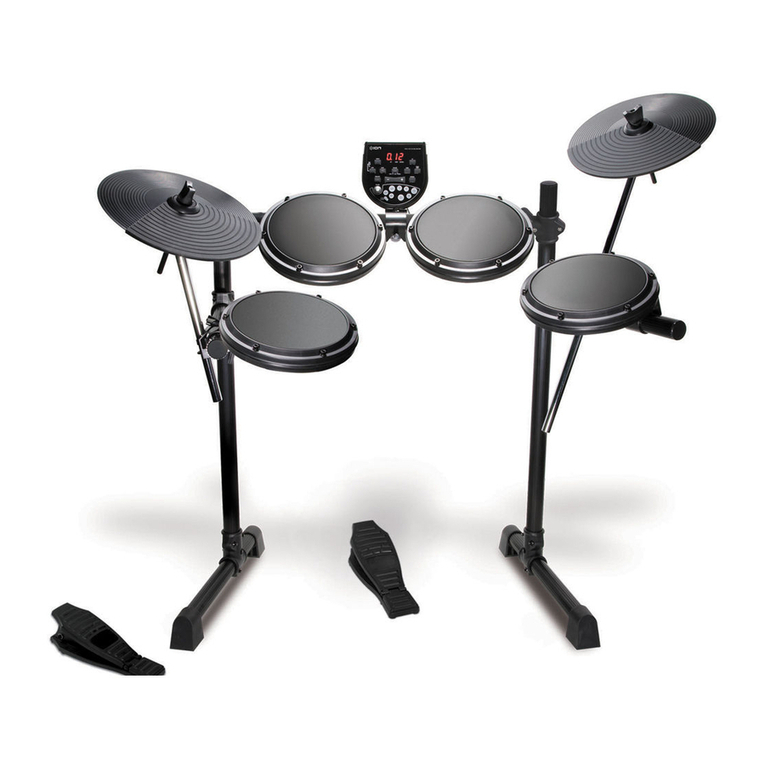Speedway ST-420 User manual

Cable Drum Machine
Operation Manual
ST-420, ST-440, ST-440W
Used For: Sinks, Tubs, Floor Drains and Roof Stacks
(Not for roots)
READ THIS OPERATION MANUAL CAREFULLY
BEFORE USING THIS PRODUCT. FAILURE TO UNDERSTAND
AND FOLLOW THE CONTENTS OF THIS MANUAL MAY
RESULT IN ELECTRICAL SHOCK, FIRE, AND/OR SERIOUS
PERSONAL INJURY OR DEATH. KEEP THESE INSTRUCTIONS
IN A SAFE PLACE FOR FUTURE USE OR WHEN LOANING OR
SELLING THE PRODUCT.

www.brasscraftmfgco.com
Acquaint yourself with the functions and controls prior
to using this machine. Should you have any questions
about the operation or use of this machine, please call
Customer Service (toll free) at 800-835-2200. If you have
any uncertainties about how to use this machine, contact a
drain cleaning specialist. Failure to follow the instructions
and warnings may result in electric shock, re, serious
injury or even death.
Make Sure This is The Right Tool
For Your Job
• This cable drum machine is intended for use in
sinks, tubs, oor drains and roof stacks with 2 inch
to 4 inch diameter lines.
• This machine is NOT designed to clear tree roots
from pipes – attempting to clear tree roots can result
in injury and will damage the machine/cable, in-turn
voiding the warranty. For clearing root disturbances,
utilize a larger drain cleaning machine such as the
Cobra 650 series.
• Do not modify this product or use it for anything
other than its intended purpose. Only use equipment
suggested by the manufacturer. Alterations or other
improper use could result in personal injury or damage
to the product also nullifying the product warranty.
Personal Protection Equipment
• Wear snug tting leather gloves when operating this
machine. Never grasp the rotating cable with anything
else, including a rag or non-leather gloves.
• Wear safety glasses or eye protection.
• Exercise cleanliness. Use hot soapy water to clean
hands and other body parts that may have been
exposed to drain cleaning contents. Do not eat or
smoke while cleaning drain, this will aid the prevention
of contamination with toxic or infectious materials.
Personal Safety
• Stay alert, watch what you are doing and use
common sense when operating a power tool. Do
not use a power tool while you are tired or under the
inuence of drugs, alcohol or medication. A moment
of inattention while operating power tools may result in
serious personal injury.
• Use personal protective equipment. Always wear
eye protection. Protective equipment such as dust
mask, non-skid safety shoes, hard hat, or hearing
protection used for appropriate conditions will reduce
personal injuries.
Read all safety warnings and instructions.
In this Operation Manual and on the product, safety
symbols and signal words are used to communicate
important safety information. This section is provided to
improve understanding of these signal words and symbols.
?
• This is the safety alert symbol. It is
used to alert you to potential physical
injury hazards. Obey all safety mes-
sages that follow this symbol to avoid
possible injury or death.
?
• This symbol signies the importance
of the user to read the operator’s
manual carefully prior to using the
machine. The manual encompasses
essential information regarding the
safe and proper operation of the
equipment.
• This symbol denotes the signicance
to always wear safety glasses with
side shields or goggles when handling
or using this equipment to reduce the
risk of eye injury.
• This symbol denotes the risk of
ngers getting trapped in a belt and/
or pulley
• WARNING indicates a hazardous
situation that, if not avoided, could
result in death or serious injury.
• This symbol indicates the risk of
hands, ngers or other body parts
being trapped, wrapped or crushed in
the drain cleaning cable.
• This symbol designates the risk of
electrical shock. This could result in
death if the machine is plugged into
an improperly wired outlet.
?
SAFETY SYMBOLS &
SIGNAL WORD CABLE DRUM MACHINE
SAFETY

www.brasscraftmfgco.com
WARNING indicates a hazardous
situation that, if not avoided, could result in death or
serious injury.
Save all warnings and instructions for future reference.
• The term “power tool” in the warnings refers to your
mains-operated (corded) power tool or battery operated
(cordless) power tool.
Work Area Safety
• Keep work area clean and well lit. Cluttered or dark
areas invite accidents.
• Do not operate power tools in explosive
atmospheres, such as in the presence of ammable
liquids, gases or dust. Power tools create sparks
which may ignite the dust or fumes.
• Keep children and bystanders away while operating
a power tool.
Distractions can cause you to lose control.
Electrical Safety
• Power tool plugs must match the outlet. Never
modify the plug in any way. Do not use any
adapter plugs with earthed (grounded) power tools.
Unmodied plugs and matching outlets will reduce risk
of electric shock.
• Avoid body contact with earthed or grounded
surfaces such as pipes, radiators, ranges and
refrigerators. There is an increased risk of electric
shock if your body is earthed or grounded.
• Do not expose power tools to rain or wet conditions.
Water entering a power tool will increase the risk of
electric shock.
• Do not abuse the cord. Never use the cord for
carrying, pulling or unplugging the power tool.
Keep cord away from heat, oil, sharp edges or
moving parts. Damaged or entangled cords increase
the risk of electric shock.
• When operating a power tool outdoors, use an
extension cord suitable for outdoor use. Use of
a cord suitable for outdoor use reduces the ricks of
electric shock.
• If operating a power tool in a damp location is
unavoidable, use a ground fault circuit interrupter
(GFCI) protected supply. Use of a GFCI reduces the
risk of electric shock.
Power Tool Use and Care
• Do not force the power tool. Use the correct power
tool for your application. The correct power tool will
do the job better and safer at the rate for which it was
designed.
• Do not use the power tool if the switch does not turn
it on and off. Any power tool that cannot be controlled
with the switch is dangerous and must be repaired.
• Prevent unintentional starting. Ensure the switch
is in the off-position before connecting to power
source and/or battery pack, picking up or carrying
the tool. Carrying power tools with your nger on the
switch or energizing power tools that have the switch
on invites accidents.
• Remove any adjusting key or wrench before turning
the power tool on.
A wrench or a key left attached to a
rotating part of the power tool may result in personal injury.
• Do not overreach. Keep proper footing and balance
at all times. This enables better control of the power
tool in unexpected situations.
• Dress properly. Do not wear loose clothing or
jewelry. Keep your hair, clothing and gloves away
from moving parts. Loose clothes, jewelry or long
hair can be caught in moving parts.
• If devices are provided for the connection of dust
extraction and collection facilities, ensure these are
connected and properly used. Use of dust collection
can reduce dust-related hazards.
• When lifting heavy objects, always lift with your
knees, never with your back. Consider using two
people when lift is heavy and/or awkward.
Proper Machine Operation
• Cleaning Chemicals can be present in clogged
drains. If you have previously used chemicals or are
unsure, take precise care to avoid contact with the
cable or debris found in the drain.
• Machine is designed to be used by one person only.
The operator must control both the cable and the foot
switch. Should the cutter stop rotating, the operator
must be able to turn the motor off. This helps to prevent
kinking and breaking of the cable which could cause
crushing or stricking injuries.
• Do not allow the cable to twist, kink or build up
tesion. Do not let the cable indure overstressed
situations. This could potentially result in chrushing
and/or stricking injuries and unpredicted cable
reactions. If the cable started to becomes overstressed,
immediately turn the machine off and rotate the cable
in the opposite direction until the twist or buckle has
been removed.
• Do not operate machine with motor in reverse.
Reverse is only used when the cable is stuck or
overstressed. Running the machine in reverse could
result in possible kinked or stressed cable and potential
injury.
• Never retract the cable from the inlet while drum
is spinning. The cable could whip around and cause
serious injury and possible death.

www.brasscraftmfgco.com
• Disconnect the plug from the power source and/or
the battery pack from the power tool before making
any adjustments, changing accessories, or storing
power tools. Such preventive safety measures reduce
the risk of starting the power tool accidentally.
• Store idle power tools out of the reach of children
and do not allow persons unfamiliar with the power
tool or these instructions to operate the power tool.
Power tools are dangerous in the hands of untrained
users.
• Maintain power tools. Check for misalignment or
binding of moving parts, breakage of parts and any
other condition that may affect the power tool’s
operation. If damaged, have the power tool repaired
before use. Many accidents are caused by poorly
maintained power tools.
• Keep cutting tools sharp and clean. Properly
maintained cutting tools with sharp cutting edges are
less likely to bind and are easier to control.
• Use the power tool, accessories and tool bits etc.
in accordance with these instructions, taking into
account the working conditions and the work to
be performed. Use of the power tool for operations
different than those intended could result in a
hazardous situation.
Service
• Have your power tool serviced by a qualied repair
person using only identical replacement parts. This will
ensure that the safety of the power tool is maintained.
This machine has manual cable feed. The cable must be
fed by hand and does not automatically extend or retract
into the machine.
This machine should not be operated in reverse under
normal operating conditions. Reverse should be used only
for a few seconds at a time to free a stuck cutting tool.
1. Belt Guard
2. Belt
3. Extension Spring
4. Cable Drum
5. Wheels (2)
6. Foot Switch Actuator
7. Motor (115v/ 60HZ)
8. Frame
9. Drum Release Hook
10. GFCI (Ground Fault Circuit Interrupter)
11. Handle
Tool Description
Your cable drum machine has four benecial tool
attachments to cope with a wide variety of obstructions. As
a general guideline, it is wise to use a tool that is at least 1"
smaller than the line to be cleared. The nature of the job and
the operator’s judgment should determine the type of tool.
MACHINE DESCRIPTION
• ST-96204
• 1/2 in x 3 in Pear Shaped Blade
• ST-96201
• 1/2 in x 1 in Round Blade
• ST-96205
• Extraction Hook
• ST-96207
• Spearhead Blade
4
7
11
8
5
39
1
6
10
2

www.brasscraftmfgco.com
Do not operate a machine that has the belt guard
removed, any absent or broken parts, or that is
inadequately assembled. If your machine does not meet
all of the conditions in this section, do not operate until the
machine is properly repaired (See Repairing Your Drum
Machine). Failure to properly prepare for operation may
result in shock, re, and/or serious personal injury or death.
Check your Personal Protective Equipment
Be Sure your personal protective equipment (See Personal
Protection Equipment Section) is in good condition. Before
use, ensure gloves are not damaged.
Prepare the Work Area
• Make sure the work area has satisfactory lighting.
• Do not work in areas that have combustible liquids,
dust or vapors that may ignite. The drain machine is
not explosion resistant and can create sparks.
• Do not work in any area until all the amable
sources have been identied and corrected.
• Never place the machine in water. If necessary
remove the water from the work area prior to use.
• Be sure the electrical outlet is properly grounded. If
unsure, have the outlet inspected by a licensed electrician.
• Make sure the path for the power machine
transportation and power cord are clear of
obstructions. Any potential sources of damage to the
power cord or machine should be relocated prior to use.
• Keep bystanders and children away from the work area.
• Drain cleaning can be messy. If necessary, use
protective covers.
Inspect and Prepare the Drain
1
2
1
1
4
3
1
• Determine if
cleaning
chemicals have
been used in the
drain. If chemicals
are present,
contact the
chemical
manufacture to
understand the
safety measures
that are necessary
to work around
those substances.
• Properly
inspect the drain.
Determine the best access point to the drain and the
size of the drain. If possible, determine the distance
to the blockage or the nature of the clog. If necessary,
remove the xture (water closet, sink, etc.) to allow
access to the drain.
Inspect and Prepare the Machine
• Verify machine and components are in place.
• Inspect your drain cleaning gloves to ensure they
are in good condition with no holes, tears or loose
sections. It is critical to have the proper gloves to
protect your hands from the rotating cable.
• Make sure the drain cleaning machine is unplugged
and inspect the Ground Fault Circuit Interrupter,
plug and power cord for any damage. If the plug
has been modied or is missing any components, do
not use the machine. It will need to be repaired by a
qualied person prior to use.
• Ensure the foot switch is attached to the air press
box properly. Do not operate the machine without the
foot switch.
• Install wheels by inserting the wheel into the frame.
(See gure A )
• Before use, clean any grease, dirt or oil off the
equipment controls and handles. This will reduce the
risk of the machine or controls slipping from your grip.
• Conrm that the machine is accurately assembled.
Look for any parts that are not in a condition which
would prevent safe and normal operation.
• Rotate the drum and make sure that it smoothly
rotates. If any problems are found, or if you are unsure,
do not use the machine until it has been properly repaired.
• Ensure that the belt guard is fastened securely
to the machine. Do not operate without the guard
properly assembled.
• Make sure the warning label on the motor is intact
and readable. Do not operate the machine without the
warning label.
• Clean any debris from the tools and cable while
inspecting the cable for any wear and damage.
• Check for ats on the outside of the cable, if any
portion looks as though it is not round, the cable
should be replaced. Inspect the cable for any kinks,
space between the coils or excessive corrosion. These
can weaken the cable during use.
• Inspect the cutting tools for any damage or wear. If
damage or wear is found the tools need to be replaced.
PREPARATION FOR OPERATION
gure A

www.brasscraftmfgco.com
against an elbow or joint in the pipe or may have
reached the clog.
Do not continue to force cable
into the drain pipe. This can
cause the cable to twist, buckle,
kink or break.
3. Tighten thumbscrew.
4. Place the motor in the forward (FOR) position and slowly
depress the footswitch to start the machine. The drum
will begin to turn as will the cable.
5. While depressing the foot switch, apply slight pressure
to the top of the arch of cable with both gloved hands.
If your cutter is at an elbow, this will help the cutter
“jump” the elbow, freeing it to continue through the
drain. If your cutter is at the clog, the cable will not feed
further.
6. Continue steps 2-5 until you have reached your clog.
7. Let the cutter do the work. Do not use too much force.
Do not continue to force cable into the drain pipe.
This can cause the cable to twist, buckle, kink or
break. Continue applying pressure to the arch of the
cable until the cutter has cleared past the clog.
If the cutter is stuck in the clog, turn the machine into
the OFF position, then to REV and slowly press the foot
switch. Let the machine run slowly in reverse,
stopping the motor often to checking if the cutter has
become released, by manually retrieving the cable into
the drum. ONLY run the motor in REV if the cutter has
become caught. If the cable begins to get stuck or
buckle/kink/twist, immediately remove your foot from
the foot switch while rmly holding the cable with
both hands. Allow the machine to come to a complete
stop and the tension to release from the cable. Turn
the machine off and immediately manually rotate the
cable in the opposite direction until the twist or buckle
has been removed.
If drum continues to rotate under power when the
cable/cutter is stuck the cable can twist, buckle kink
or break.
Retrieving the Cable
8. Move the motor switch to the OFF position. Do not
operate the motor in reverse.
9. Unplug the power cord.
10. Loosen the thumbscrew and hand feed all the cable
If your machine is not properly operating, do not use it
until the machine is properly repaired.
Do not allow the cable to twist, kink, buckle, become
overstressed or stuck. If the cable begins to get stuck
or buckle/twist, immediately remove your foot from the
foot switch while rmly holding the cable with both
hands. Allow the machine to come to a complete stop
and the tension to release from the cable. Turn the
machine off and immediately manually rotate the cable
in the opposite direction until the twist or buckle has
been removed.
Fingers or other body parts can be caught in rotating
parts and crush. Do not wear loose clothing, neck ties,
unbuttoned jackets, rings, watches or jewelry and always
tie back long hair.
This will prevent the risk of entanglement
with moving parts. This machine has manual cable feed
and does NOT automatically extend or retract into the
machine. Cable MUST be fed by hand. You will use the
machine to clear obstructions, returning to hand feeding
the cable in between clogs or joints.
1. Plug the machine into a properly grounded outlet.
Leaving the motor in the OFF position.
2. Loosen thumbscrew and pull sufcient cable out of the
drum and place the end of the cable as far into the inlet
as possible. The machine should be NO MORE THAN 2ft
from the drain opening with around 4ft of uncovered
cable between the drain opening and drum opening.
This cable should form a slight arch. NEVER FORCE
cable down the line. When the cable will not feed
further into the drain pipe the cable is probably stuck
OPERATING INSTRUCTIONS
• Conrm that the FOR/OFF/REV switch is in the OFF
position. Using dry hands, plug the cord into a correctly
grounded outlet. To test the GFCI provided, push the
test button in, the indicator light should go off. Restart
by pushing the reset button in. If the indicator light
goes on, the GFCI is functioning properly. If it is not
working properly, unplug the cord and do not use the
machine till it has been correctly xed.
• Move the FOR/OFF/REV switch to the FOR position.
Slowly press the foot switch and note the direction of
rotation of the drum. If the foot switch does not rotate
the drum, do not use this machine and have it properly
inspected. The drum should rotate counter clockwise
when viewing from the front of the machine. Move
the switch to the REV position to ensure that the drum
is rotating clockwise, repeating the previous steps to
ensure that the machine is working properly. If the
rotation is not correct, do not operate this machine.

www.brasscraftmfgco.com
back into the drum, cleaning in cold water then oiling
the cable as you go. It is recommended that the cable
is continuously ushed through with clean water and
oiled as it is being retrieved from the pipe and again
before putting it away. This will prolong cable life and
prevent unpleasant odors as well as the damaging
effects of drain cleaning compounds.
11. Once all of the cable is fed back into the drum, tighten
the thumbscrew.
Post-Operation Maintenance
12. Drain water from drum. Your model is equipped with
a drain hole in the cable drum. Water, sediment and
debris can corrode cable – remove the drum from the
machine (see “To Remove Drum from Frame” below)
and place it face down to allow all the water to drip
out. This should be done after every use.
MACHINE MAINTENANCE
The motor switch should be OFF and machine
unplugged prior to preforming any maintenance,
adjusting, or cleaning the machine to reduce the risk
of electric shock, re, serious injury or death.
Cables
• The metal cable should be thoroughly cleaned
with water and lubricated to prolong cable life and
prevent unpleasant odors as well as the damaging
effects of sediment and drain cleaning compounds.
Cleaning and lubricating should occur prior to storing
the machine. Regularly inspect cables for damage.
• Replace cables that are worn or kinked.
Cleaning the drum machine
• This machine is equipped with a drain hole in the cable
drum. It is recommended prior to storage, all water
residues should be removed from the drum. Remove
the drum from the machine (see “To Remove Drum from
Frame” below) and place it face down. This will allow
all of the water to drip out. Conrm the drum is dry
prior to storing.
Lubrication
• Typically, the drain cleaning machine will not require
lubrication. The bearings will need to greased with a
general lubricant if the drum is removed or changed.
The cable will need to be lubricated after each use.
Storage
• Make sure all water and residue is removed from the
drum prior to storage. Drum should be stored properly
mounted on the machine frame.
• Store machine in a dry, safe, secured place, out of
the reach of children and people unfamiliar with this
machine.
To Remove Drum from Frame
gure 1
1. Remove wing nuts on the belt guard
(pulley wheel cover) and remove the
belt guard. (See gure 1)
gure 2
2. Remove the drive belt from the drum
by pressing down rmly on the spring
motor housing and release the drive
belt. (See gure 2)
gure 3
3. A release hook is situated immediately
behind the drum. Pull this hook upward
and pull the drum forward to remove it
from the frame. (See gure 3)
To Connect the Drum to the Frame
1.
Place center of drum hub on drum
drive. Pull the release hook up to
securely push the drum on the frame.
(See gure 4)
2.
Slide the belt under and over the
drum and onto the pulley wheel.
3.
Push the motor housing downward
to locate the belt onto the pulley
wheel. (See gure 5)
4. Reinstall belt guard and wing nuts.
gure 4
gure 5

www.brasscraftmfgco.com
REPAIRING YOUR DRUM
MACHINE
General maintenance and other tasks detailed in this
manual, such as the replacement of the cable or a
damaged belt guard can be done by a qualied owner.
Other servicing repairs, such as the replacement of a
defective motor switch, must only be done by Cobra.
Please contact Cobra Customer Service at
800-835-2200.
When servicing, use only genuine Cobra parts or
contact customer service. Not using proper parts may
result in electric shock/serious injury or death.
Installing Replacement Cable
1. Ensure the motor switch should be OFF and machine
unplugged.
2. Loosen the thumbscrew and remove existing cable
from the machine.
3. Disconnect secured cable end from inside drum unit
4. Carefully remove the new cable from the packaging.
The tension is likely built up and has potential to strike
the user.
5. Uncoil the new cable completely.
6. Carefully insert the cable into the drum and reconnect
the cable to the inside drum unit for a counter-
clockwise insertion.
7. Once cable is secured in drum, continue to insert the
remaining cable counterclockwise until you reach the
slotted end. This part should remain on the outside of
the drum.
8. Finally, tighten the thumbscrew.
Replacing Belt Guard/Belt Installation
1.
Remove wing nuts on the belt guard
(pulley wheel cover) and remove the
belt guard. (See gure 6)
2.
Slide the belt under and over the
drum and onto the pulley wheel.
3.
Push the motor housing downward
to locate the belt onto the pulley
wheel. (See gure 7)
4. Reinstall belt guard and wing nuts.
gure 6
gure 7

Manufacturer assumes no responsibility for failure due to improper use.
©2019 Brasscraft Manufacturing Company, Novi, MI 48375-5331 U.S.A.
All Rights Reserved. www.brasscraftmfgco.com Made in China to Brasscraft Mfg. Co. specications.
Speedway®brand is a trademark of Brasscraft Mfg. Co.
El fabricante no asume ninguna responsabilidad si la uso no se hace de acuerdo al instructivo.
Todos los Derechos Reservados. Hecho en China bajo las especicaciónes de Brasscraft Mfg. Co.
Speedway®brand es una marca registrada de Brasscraft Mfg. Co.
651-960400
v0219
This manual suits for next models
2
Table of contents
